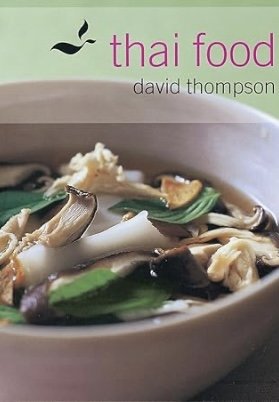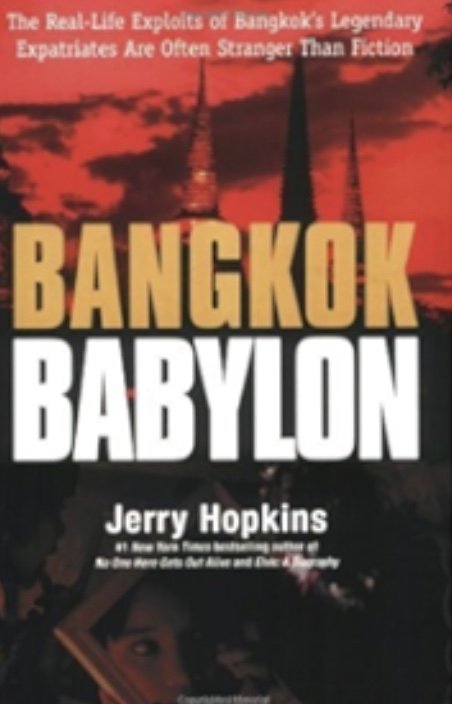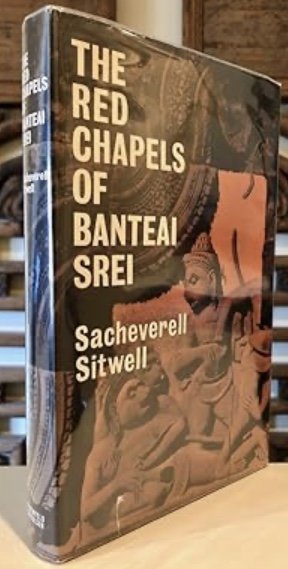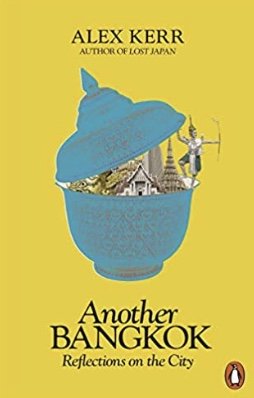Thai Food by David Thompson, photography by Earl Carter (Ten Speed Press) ~Janet Brown
Do you remember life back in 2002? Internet cafes were a popular feature in big cities and email was considered cutting edge technology. Letters and postcards were keeping post offices afloat all around the world and bookstores were just beginning to worry about that online business, Amazon. Facebook wouldn’t be invented for another two years and wouldn’t be released to the general public until two years after that. Digital cameras were just beginning to catch on. Nobody had heard of Kindles because they weren’t invented until 2007. Many people had landlines and answering machines because cell phones were too cumbersome to use as a primary form of communication. Books were read on paper, not on screens.
And in that year, Ten Speed Press, an upstart publishing house based in the Bay Area of San Francisco, released a 674-page cookbook with a simple title, Thai Food.
At this time, Thai restaurants weren’t a common sight in American cities of all sizes and Thailand hadn’t yet become the world’s favorite holiday destination. David Thompson was a young Australian who had fallen in love with Thai food and with the country where it was eaten every day, whose Thai restaurant in London had received a Michelin star the year before. Outside of the culinary world, nobody knew his name. His new book cost $45.00, the equivalent to $78.95 in today’s currency. Why wasn’t it a flop?
The best cookbooks are the ones that people read for pleasure. M. F. K. Fisher, Laurie Colwin, Brillat-Savarin, even Irma Rombauer’s The Joy of Cooking, are picked up because they’re all interesting—and often fun—to read. David Thompson knew that and wrote a cookbook that’s an encyclopedia of Thailand’s history, geography, culture, and food, along with detailed instructions on how to create its recipes.
The recipes, he’s quick to assert, aren’t his. He was fortunate to become friends with some of Thailand’s aristocratic matriarchs who had been rigidly trained in the art of royal Thai cuisine. Their standards were unyielding and painstaking. The food they had eaten all their lives had three unassailable components: taste, texture, and seasoning. In pursuit of these attributes, they tolerated no shortcuts and no skimping.
Their own training came from “memorial books,” that collected recipes beloved by the deceased noblewoman to whom the book was a tribute. They shared these with Thompson and he took their standards as his own. “The best food of any country, “ he says, “has always been centered around the court, and this was certainly true of Siam.” Although Thai Food doesn’t ignore street food and rural staples, it has a primary goal: to preserve how to make the food that was eaten by those who could afford the very best, “before it is eroded, altered, and modernized.”
Thompson is an exceptionally fine writer and an opinionated one who sternly proclaims that Thai cookery is “not an instant cuisine.” “Substitutions and shortcuts in describing the food would not only be disrespectful but debasing.”
Canned coconut cream he deplores as “bastardized” and he tells exactly how to extract milk and cream from a fresh coconut. Fortunately he ends his description of this agonizing process by saying that using a food processor is allowed. Almost every recipe that he provides involves making a curry paste from scratch, a daunting process for which he grudgingly allows the use of a blender. “Be patient as you make a paste,” he cautions, “The blender, regrettably, was not created to make curry pastes and therefore may expire under such spicy exertions.” When he turns to recipes from the Muslim population of Southern Thailand, such as oxtail soup, he insists on freshly made curry powder for which he provides a list of ten ingredients, most of them ground on the spot. (Thank goodness, using “a clean coffee grinder” is okay.)
On one subject he is adamant. “A meal without rice is inconceivable.” He then provides the necessary components for a proper Thai meal: a relish, a soup, a curry, a salad (which, he says, is a “mistranslation” of what that dish truly--not the salad Westerners include in a meal but “ a lively assemblage of ingredients” whose “sprightliness adds savor and contrast”), and perhaps a simple stir-fried, grilled, or deep-fried dish. No need to worry about the food cooling before it’s served because “flavor is at its optimum just above room temperature.”
In spite of his royalist leanings, Thompson is remarkably generous with recipes for street snacks, dishes made by more plebeian mortals, and ones that have migrated from other countries. He tells how to make Chiang Mai sausage and its distant cousin that comes from the Northeast. He gives recipes for dishes that are clearly spawned from poverty--minced rabbit curry and curried fish innards (the innards are discarded after making a stock but even so, the name does startle.) He divulges secrets that aren’t commonly known--a convenient source for prepared spices is any Chinese medicine shop, since these are regarded as medicinal and are kept in wooden apothecary drawers.
All of this is embellished with stunning food photography, full-page and in color, almost suitable for framing and definitely appetite-enhancers. Thompson concludes with an extensive bibliography, six pages of sources written in English and four pages that list cookbooks and memorial books that are available only in Thai.
Thompson wrote this to create a record of food that might easily succumb to global influences and modernization. He succeeded. His passion is contagious and his writing is absolutely delightful, while providing an invaluable tutorial in what Thai food has been and what it may no longer be again.



















